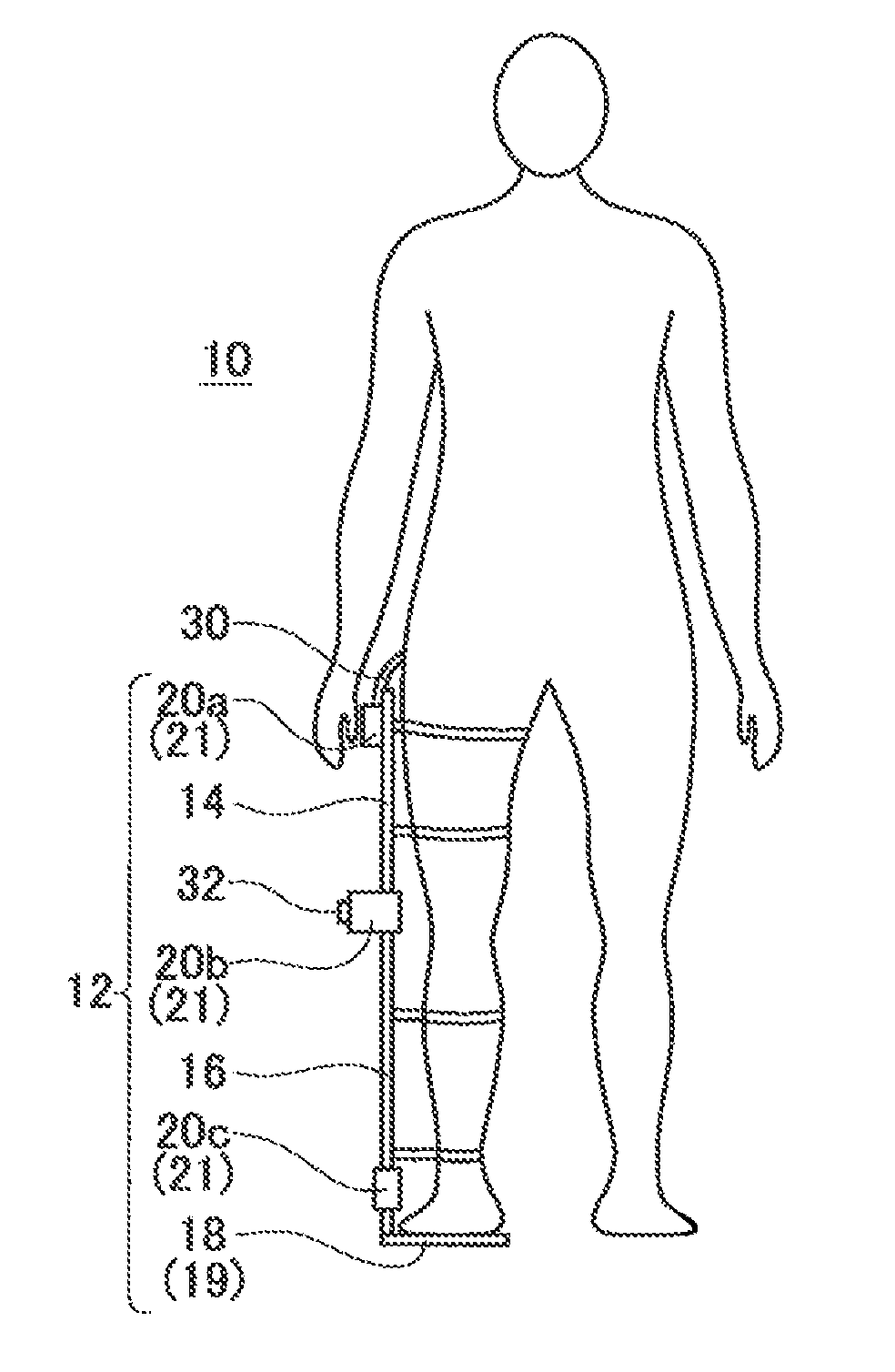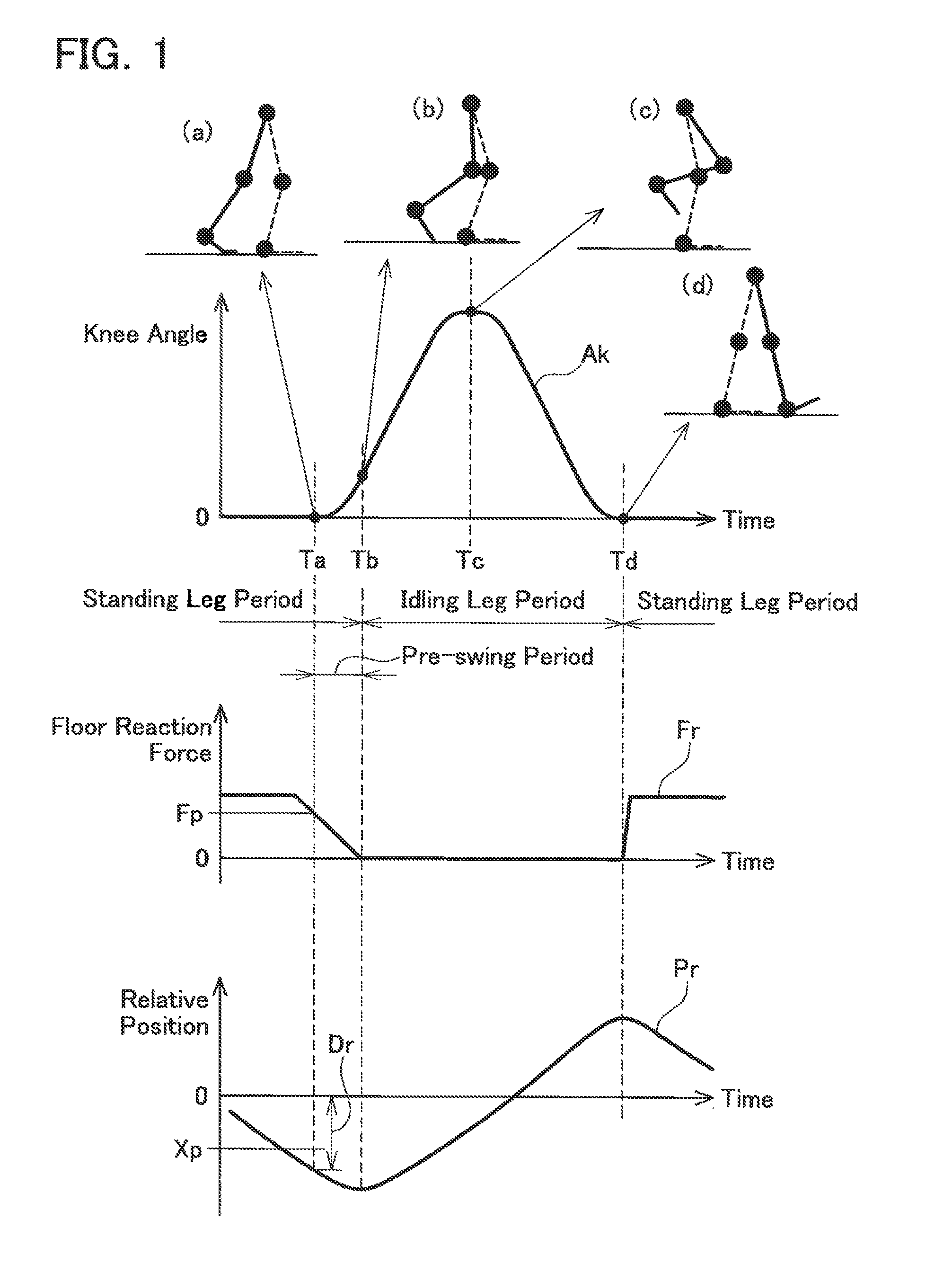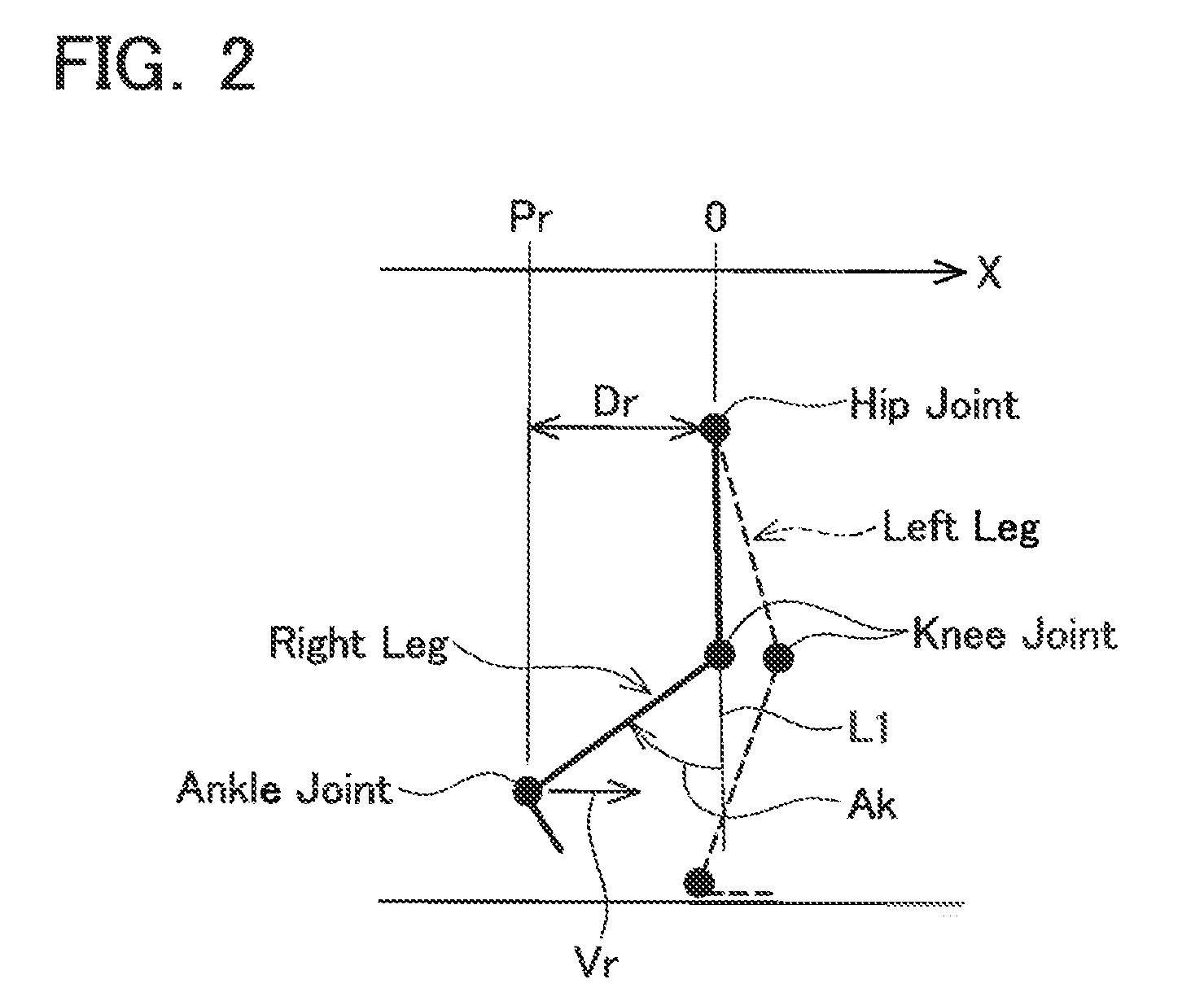Walking assist device
a technology of assist device and foot, which is applied in the field of walking assist device, can solve the problems of user discomfort, user particularly discomfort, and bothersome user attaching sensors to both legs, and achieve the effects of reducing the reaction force acting on the foot, reducing the discomfort feeling of the user, and reducing the discomfort feeling caused in the user
- Summary
- Abstract
- Description
- Claims
- Application Information
AI Technical Summary
Benefits of technology
Problems solved by technology
Method used
Image
Examples
Embodiment Construction
[0023]Before describing a preferred embodiment of the present invention, a motion of a leg during walking will be described. FIG. 1 is a diagram for describing the motion of a first leg during walking. The graph labeled with reference symbol. Ak shows time change in an angle of a knee joint (knee angle) Ak of the first leg. The graph labeled with reference symbol Fr shows time change in a floor reaction force Fr received by a foot of the first leg. Reference symbol Pr indicates the time change in the relative position of the foot of the first leg with respect to a hip. Reference symbol Dr indicates a distance in a horizontal direction between the foot of the first leg and the hip. Reference symbol Xp indicates a reference for judging the state of the first leg (predetermined relative position). The predetermined position Xp is described hereinafter. In the description given below, the right leg of the user corresponds to the first leg and the left leg corresponds to the second leg. ...
PUM
 Login to View More
Login to View More Abstract
Description
Claims
Application Information
 Login to View More
Login to View More - R&D
- Intellectual Property
- Life Sciences
- Materials
- Tech Scout
- Unparalleled Data Quality
- Higher Quality Content
- 60% Fewer Hallucinations
Browse by: Latest US Patents, China's latest patents, Technical Efficacy Thesaurus, Application Domain, Technology Topic, Popular Technical Reports.
© 2025 PatSnap. All rights reserved.Legal|Privacy policy|Modern Slavery Act Transparency Statement|Sitemap|About US| Contact US: help@patsnap.com



